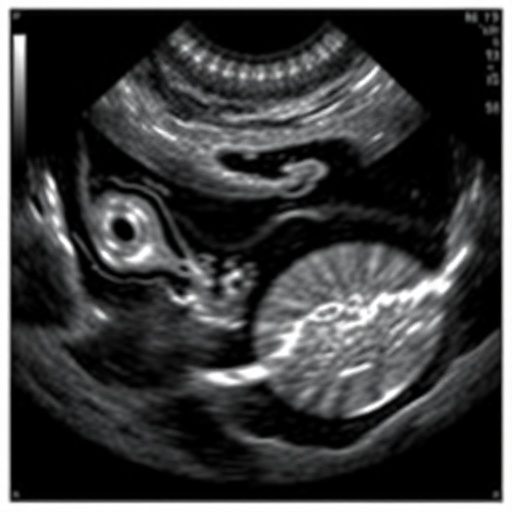In the ever-evolving landscape of medical imaging, a groundbreaking study has illuminated the formidable potential of high-frequency contrast-enhanced ultrasound (H-CEUS) in distinguishing benign from malignant superficial lymph nodes. This advancement holds promise for significantly refining diagnostic accuracy—a crucial pivot in the early detection and treatment of lymphatic malignancies. By leveraging the enhanced temporal resolution and superior microvascular visualization capabilities of H-CEUS, researchers have presented compelling evidence that could redefine clinical protocols for lymph node assessment.
Lymph nodes, integral components of the human immune system, serve as biological gatekeepers, filtering harmful agents and signaling pathological changes within the body. Correctly identifying whether these nodes are benign or cancerous is paramount, impacting therapeutic decisions and patient outcomes. Despite the ubiquity of conventional contrast-enhanced ultrasound (CEUS) in clinical practice, its limitations in sensitivity and specificity have often necessitated invasive confirmation methods, such as biopsies or surgical resections.
The recent study, encompassing a cohort of 77 patients exhibiting suspected superficial lymph node abnormalities, undertook a meticulous comparative analysis between CEUS and its high-frequency counterpart, H-CEUS. Each participant was subjected to both imaging modalities, with subsequent pathological verification serving as the diagnostic gold standard. The investigation employed rigorous statistical methodologies, including chi-square testing and receiver operating characteristic (ROC) curve analysis, to elucidate the differential diagnostic capabilities of the two approaches.
.adsslot_eYXhJA9Hx5{width:728px !important;height:90px !important;}
@media(max-width:1199px){ .adsslot_eYXhJA9Hx5{width:468px !important;height:60px !important;}
}
@media(max-width:767px){ .adsslot_eYXhJA9Hx5{width:320px !important;height:50px !important;}
}
ADVERTISEMENT
Outcomes from the study underscored the remarkable superiority of H-CEUS. Its sensitivity—a measure of correctly identifying malignant nodes—stood at an impressive 95.92 percent, dramatically outpacing the 83.67 percent recorded by conventional CEUS. Specificity, the ability to correctly classify benign nodes, similarly favored H-CEUS with a rate of 92.86 percent compared to CEUS’s 57.14 percent. This leap in diagnostic precision translated into an overall accuracy rate of 94.80 percent for H-CEUS, starkly contrasting with CEUS’s 74.03 percent.
A pivotal feature of H-CEUS lies in its enhanced visualization of microvascular architecture within lymph nodes. Malignant transformations often incite complex neovascularization patterns that are subtle and challenging to detect with standard imaging frequencies. The high-frequency ultrasound waves employed in H-CEUS provide a more detailed mapping of these microvascular changes, enabling clinicians to discern malignant infiltration with greater confidence and reliability. This technical innovation effectively bridges a long-standing gap in non-invasive oncological diagnostics.
Further emphasizing its diagnostic prowess, the area under the ROC curve (AUC) for H-CEUS was calculated at 0.944, indicating almost perfect discrimination capacity. In contrast, CEUS yielded an AUC of only 0.704, signifying moderate diagnostic performance. An AUC closer to 1.0 reflects a test’s outstanding ability to differentiate between disease states, making these findings particularly impactful for clinical adoption.
Technologically, H-CEUS capitalizes on microbubble contrast agents that amplify ultrasonic signals, sensitizing equipment to minute vascular changes. When integrated with high-frequency probes, this contrast modality unravels the subtle heterogeneities in lymph node perfusion and architecture. The resultant images afford unparalleled clarity, fostering nuanced interpretation by radiologists and oncologists alike.
Interdisciplinary collaboration underpinned the success of this research, merging expertise from medical imaging specialists, oncologists, and biostatisticians. Such synergy underscores the importance of holistic approaches in transcending traditional diagnostic boundaries, thereby propelling the field toward precision medicine paradigms that tailor patient care based on sophisticated imaging biomarkers.
While the findings are promising, the authors acknowledge the necessity for larger-scale, multicentric trials to validate H-CEUS across diverse populations and varied clinical presentations. Additionally, exploring the integration of artificial intelligence for automated image analysis could further refine diagnostic workflows and reduce inter-observer variability, heralding a new frontier in ultrasound diagnostics.
This study exemplifies the transformative potential of technological innovation in oncology diagnostics. By harnessing high-frequency sound waves and advanced contrast agents, H-CEUS sets a new benchmark in lymph node evaluation, fostering earlier cancer detection and more informed clinical decisions. As the medical community grapples with rising cancer prevalence globally, tools that enhance non-invasive diagnostic precision are not merely desirable but essential.
In conclusion, the advent of high-frequency contrast-enhanced ultrasound comprises a significant leap forward in the imaging of superficial lymph nodes. This modality’s elevated sensitivity, specificity, and accuracy herald improved patient prognoses and streamlined treatment algorithms. The compelling evidence presented advocates for the rapid integration of H-CEUS into oncological imaging suites, positioning it as a critical ally in the battle against cancer.
Subject of Research: Differentiation of benign and malignant superficial lymph nodes using high-frequency contrast-enhanced ultrasound.
Article Title: High-frequency contrast-enhanced ultrasound in discriminating benign and malignant superficial lymph nodes: a diagnostic comparison.
Article References:
Liang, S., Han, P., Fei, X. et al. High-frequency contrast-enhanced ultrasound in discriminating benign and malignant superficial lymph nodes: a diagnostic comparison. BMC Cancer 25, 961 (2025). https://doi.org/10.1186/s12885-025-14238-1
Image Credits: Scienmag.com
DOI: https://doi.org/10.1186/s12885-025-14238-1
Tags: benign vs malignant lymph nodesclinical protocols for lymph node evaluationcontrast-enhanced ultrasound limitationsdiagnostic accuracy in lymphatic malignanciesearly detection of lymphatic cancerH-CEUS in lymph node assessmenthigh-frequency contrast-enhanced ultrasoundlymph node imaging techniquesmicrovascular visualization in ultrasoundnon-invasive lymph node diagnosticspatient outcomes in lymphatic diseaseultrasound imaging in oncology





